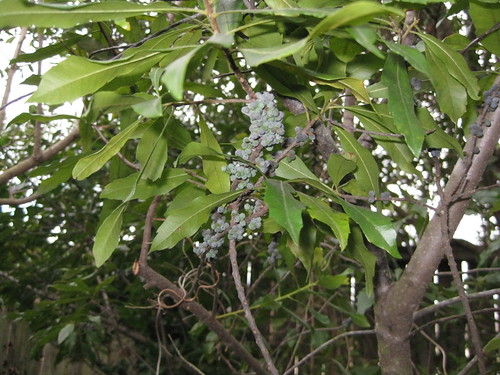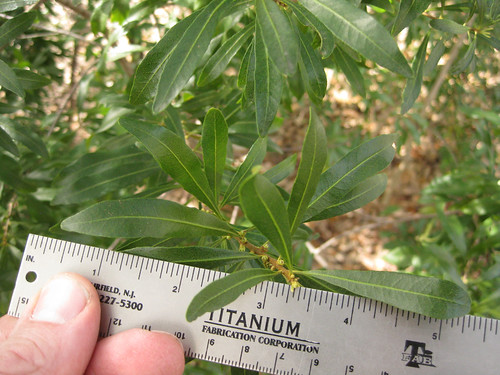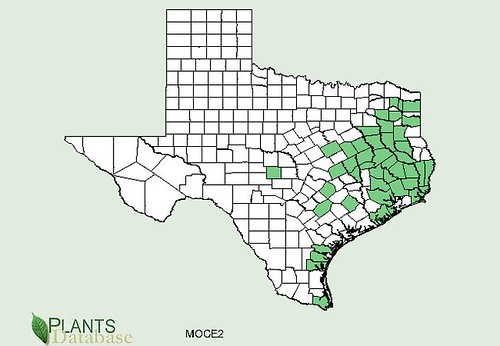Abundance: plentiful
What: leaves
How: seasoning herb
Where: woods, landscapes
When: leaves are present all year, though they are most aromatic in late winter/early spring.
Nutritional Value: flavonoids/anitoxidants
Other uses: The small blue berries have a wax coating which can be used to make bayberry candles.
Medicinal Summary:
Root Bark - soothes inflamed skin; soothes gastrointestinal and urinary tract inflammation; diuretic to flush kidney stones; soothes sore throat (poultice, tisane)
Wax myrtle/Bayberry berries

Wax myrtle/Bayberry leaves

Texas distribution, attributed to U. S. Department of Agriculture. The marked counties are guidelines only. Plants may appear in other counties, especially if used in landscaping.

North American distribution, attributed to U. S. Department of Agriculture.

Allow leaves to dry or force-dry the leaves in an oven, then crumble into food. These are one of the key seasoning for Cajun seafood boils. I like to use it as a replacement for Italian season to make a delicious "Cajun" lasagna.
Bayberry candles are made from the wax found on the outside of the small, blue berries. Boil the berries in some water and collect the wax that floats to the surface. This wax is brittle and doesn't mold well. Combine the bayberry wax with beeswax or other soft wax for better results. Yes, I know bayberry candles are a key component of pagan money spells. No, I don't sell bayberry candles.
Buy my book! Outdoor Adventure Guides Foraging covers 70 of North America's tastiest and easy to find wild edibles shown with the same big pictures as here on the Foraging Texas website.

